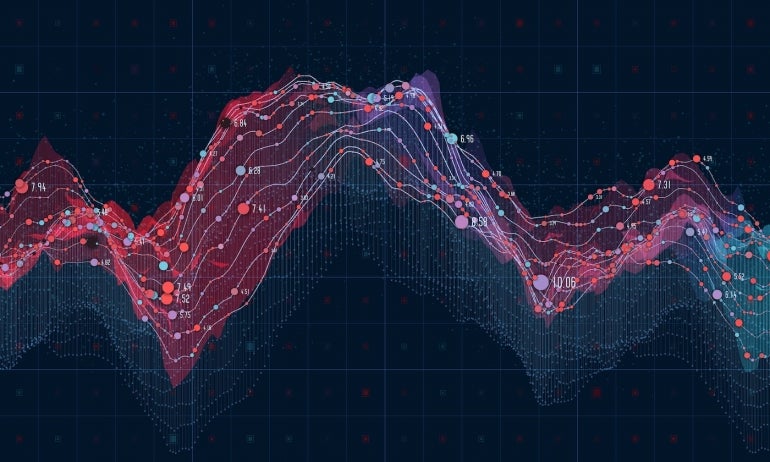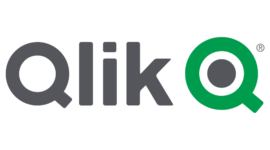An introduction to change data capture

Change data capture is a data management process that is designed to capture, track and quickly move data when it changes. Unlike other traditional processes that batch data replication once or several times a day, CDC allows organizations to replicate data within milliseconds to inform decisions based on up-to-the-moment data. This makes organizationally critical business operations more efficient and productive, helping organizations stay ahead of the competition.
SEE: Data migration testing checklist: Through pre- and post-migration (TechRepublic Premium)
CDC is especially effective in cloud migrations. Because of its low latency and ability to independently monitor data as it changes, businesses can analyze newly generated data without ruining the performance of their operational databases. In this introduction to change data capture, learn about how it works, why it’s important and some helpful tools for managing CDC.
Jump to:
What is change data capture?
Change data capture is a process for recognizing and monitoring changes to and movements of database data. With CDC, data is often transferred in smaller increments from one database to another.
Traditional data movement is bulk-based, typically using an ETL tool to move data from its source to its destination. The challenge with this method is that there is a limited batch window or time period for when you can move data.
SEE: Best ETL tools and software (TechRepublic)
Change data capture takes a different approach. Every change or transaction is captured in real-time and moved from the source database to the target database in smaller-scale chunks.
There are three main methods used in change data capture.
Log-based CDC
Every database creates a log file whenever a new transaction occurs. Thus, a CDC solution that uses a log-based method can read the log file, pick up these changes and apply them to the target database. This method is highly efficient, with no impact on the source system.
Query-based CDC
CDC solutions that use a query-based approach rely on running specific queries against the source. For example, this type of CDC solution may examine a time stamp to determine which records have changed. It then reads those changes and applies them to the target database.
Trigger-based CDC
Triggers are pieces of code that fire when certain conditions are met. Thus, change data capture solutions that triggers fire whenever a change is made to the source database. The trigger then captures the change and applies it to the target database.
Why does change data capture matter?
Change data capture is important because it allows organizations to move data in real-time without impacting the performance of source databases. This ensures that changes and updates are reflected quickly and accurately in the target database.
SEE: What does ‘data-driven’ really mean? (TechRepublic)
Further, change data capture can help improve overall business operations and data management. By responding to change almost immediately, businesses can make more informed, data-driven decisions about their operations.
Benefits of CDC
CDC is growing in popularity for data teams that are managing large databases. It offers various benefits that make it an attractive option for database managers and administrators — from reducing the size of bulk loads to improving the efficiency of data transfers. Below, we explore some of the key advantages of using change data capture in your database environment.
Efficiency and impact reduction
With change data capture, you no longer need to use bulk load updating or inconvenient batch windows. CDC enables the real-time streaming of data changes into your desired repository and only requires incremental loading.
Log-based CDC in particular is remarkably efficient because it captures only the changes and not a whole table scan every time data needs to be transferred. This CDC approach can significantly reduce the impact on your source.
Further, by replicating data instantly with CDC, database migrations can occur without hiccups and analytics can be conducted in real time. Finally, using CDC can facilitate fraud protection and synchronize data between databases located all over the world.
Cloud optimization
CDC is an efficient way to move data across a wide area network, so it’s perfect for cloud usage and can be used to quickly move large volumes of information between on-premises and cloud databases. This makes it an ideal solution for companies looking to migrate their databases to the cloud or utilize hybrid deployments with both on-premises and cloud components.
SEE: Hiring kit: Database engineer (TechRepublic Premium)
It’s also ideal for migrating data into a stream processing solution like Amazon Kinesis Streams or Apache Kafka. Because of CDC’s compatibility with stream processing technology, companies can take advantage of real-time analytics without sacrificing performance or scalability.
Data synchronization
CDC also ensures data in multiple systems stay synchronized. As an example, CDC is especially important for time-sensitive applications that deal with financial transactions, where accurate data syncing is paramount.
With CDC, there’s no need to worry about discrepancies between different databases; any changes made are automatically propagated across all connected systems, establishing the most up-to-date information access for all users at all times. This makes it perfect for customer relationship management solutions that require near real-time updates across multiple platforms.
Examples of CDC solutions
Several change data capture solutions are available, ranging from open source to proprietary. We’ve highlighted some popular change data capture solutions below.
Oracle GoldenGate

Oracle GoldenGate is efficient CDC and replication software that helps users easily move data from one database to another without errors or latency. Oracle GoldenGate enables optimized, high-speed data movement and replication of Oracle Database. It also supports a wide range of other sources, such as Microsoft SQL Server, IBM DB2, Teradata, MongoDB, MySQL and PostgreSQL.
Oracle GoldenGate allows for end-to-end monitoring of stream data processing solutions while helping to reduce the need for managing computing environments. It has become a popular CDC option due to its ease of use, high-speed data movement capabilities and availability across multiple platforms.
Talend

Talend is premier data integration software for enterprise-level CDC. Talend’s range of offerings extends from Open Studio for Data Integration, their flagship open source platform, to Talend Integration Cloud, with three independent editions that offer broad connectivity and exceptional built-in cloud capabilities.
Talend’s integrated big data components and connectors provide seamless access to various popular technologies, including Hadoop, NoSQL, MapReduce, Spark, and various machine learning and IoT solutions. Talend’s CDC replication services offer reliability, scalability and rapid adoption for any business looking to update its data management processes.
Qlik Replicate (Formerly Attunity Replicate)

Qlik Replicate is an advanced, log-based change data capture solution that can be used to streamline data replication and ingestion. It emphasizes speed by utilizing parallel threading to process large data quantities quickly.
Qlik provides connectivity across major data sources like RDBMS platforms, data warehouses, and cloud vendors such as AWS, GCP and Azure. Its flexible connectivity options make Qlik Replicate a scalable solution for cross-integration purposes. Qlik Replicate allows for real-time replication of data changes and makes sure the same changes are applied immediately to the target endpoint.
Read next: Top cloud and application migration tools (TechRepublic)
For all the latest Technology News Click Here
For the latest news and updates, follow us on Google News.
